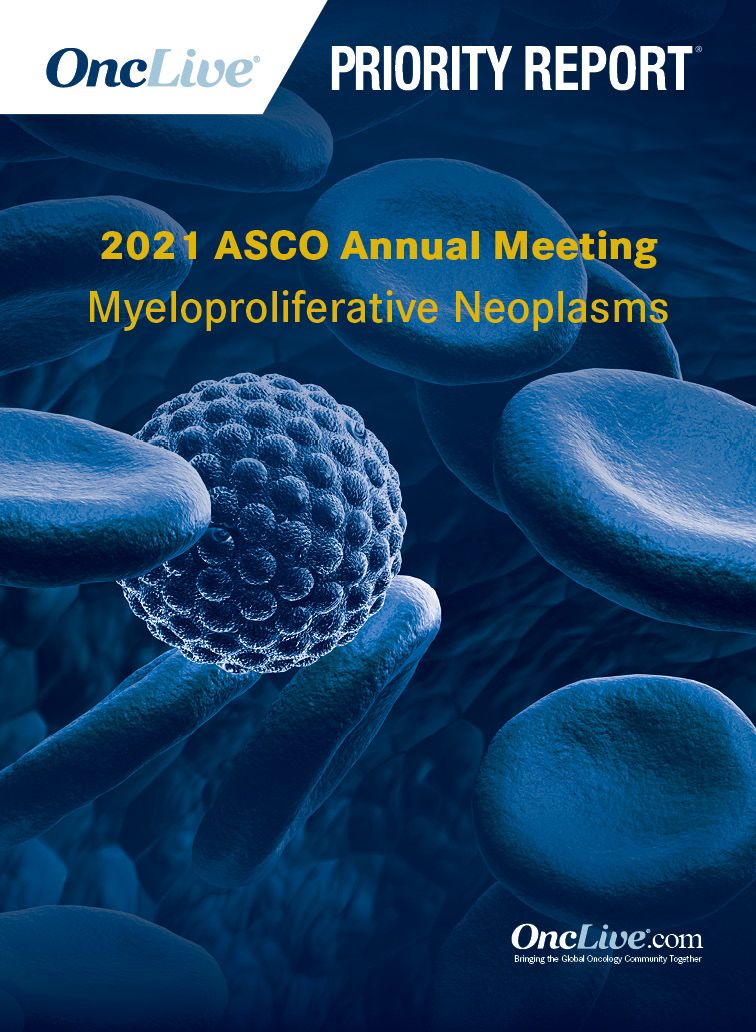Allo-Transplant Recommended for Eligible Patients With Myelofibrosis
Allogeneic hematopoietic cell transplant should be considered a standard of care option for patients with high-risk myelofibrosis, according to findings from a systematic review and meta-analysis.
Jan Philipp Bewersdorf, MD

Allogeneic hematopoietic cell transplant (allo-HCT) should be considered a standard of care option for patients with high-risk myelofibrosis, according to findings from a systematic review and meta-analysis that were presented during the 2021 ASCO Annual Meeting.
The meta-analysis, which evaluated 8739 patients from 43 studies, demonstrated an overall survival (OS) rate of 66.7% (95% CI, 63.5%-69.8%) at 1 year, 64.4% (95% CI, 57.6%-70.6%) at 2 years, and 55% (95% CI, 51.8%-58.3%) at 5 years among patients who underwent allo-HCT.
The non-relapse mortality (NRM) rate was 25.9% (95% CI, 23.3%-28.7%) at 1 year, 29.7% (95% CI, 24.5%-35.4%) at 2 years, and 30.5% (95% CI, 25.9%-35.5%) at 5 years.
“Given the poor prognosis of patients not receiving transplant and in the absence of curative non-transplant therapies, our results support the consideration of allo-transplant for eligible patients with myelofibrosis,” said lead study author Jan Philipp Bewersdorf, MD, a hospital resident at Yale School of Medicine, in a virtual presentation of the data.
Allo-HCT remains the only curative-intent treatment option available for patients with myelofibrosis. However, many patients are ineligible for transplant or sustain significant transplant-related mortality. As a result, patient selection is critical to minimize the risks associated with allo-HCT, Bewersdorf explained.
Moreover, the efficacy and safety data that surround allo-HCT are mixed and largely attained retrospectively.
The systematic review and meta-analysis was conducted via various databases, including Cochrane Library, Google Scholar, Ovid MEDLINE, Ovid Embase, PubMed, Scopus, and the Web of Science Core Collection from inception to October 11, 2020.
“Databases were searched using a combination of controlled vocabulary and free-text terms for relevant studies on the efficacy and safety of allo-HCT in patients with primary and secondary myelofibrosis,” said Bewersdorf.
Overall, 7595 records were identified through database searching. After removing duplicates, 4247 records were screened. Of these, 3854 records were excluded.
From there, 393 full-text articles were assessed for eligibility. Of these, 350 were excluded for reasons including conference abstracts (n = 217), insufficient reporting of primary outcomes (n = 80), less than 5 myelofibrosis patients included (n = 13), outcomes of myelofibrosis patients not reported (n = 13), no English full-text available (n = 10), outcomes of patients who underwent allo-HCT not reported separately (n = 5), editorials (n = 4), review articles (n = 4), duplicate study analysis (n = 3), and data that were only on post-transplant relapse (n = 1).
As such, 43 studies were included in the quantitative synthesis meta-analysis.
Random-effects models were used to pool response rate data to evaluate the co-primary end points of 1-year, 2-year, and 5-year OS rates. Secondary end points included NRM, relapse-free survival (RFS), and incidence and severity of acute and chronic graft-vs-host disease (GVHD).
Additionally, the study protocol was registered on PROSPERO (CRD42020188706).
Further results from the analysis revealed that the RFS rate was 65.3% at 1 year, 56.2% at 2 years, and 53.6% at 5 years, Bewersdorf highlighted.
Additionally, 44% (95% CI, 39.6%-48.4%) of patients who underwent allo-HCT developed some degree of acute GVHD (aGVHD). Grade 3 or 4 aGVHD was observed in 15.2% of patients.
Any-grade chronic GVHD (cGVHD) was observed in 46.5% (95% CI, 42.2%-50.8%) of patients. Extensive or moderate/severe cGVHD was noted in 26.1% of patients.
Notably, no significant difference between conditioning regimen intensity, median patient age, and proportion of Dynamic International Prognostic Scoring System–intermediate-2/high patients with myelofibrosis was observed.
The analysis was limited by the absence of randomized clinical trial data and the retrospective designs in most of the studies included in the review.
“Regarding future research, additional studies are necessary to enhance patient selection—for example, by incorporation of molecular markers to identify high-risk patients that benefit the most from transplant—and to optimize pre- and post-transplant treatment strategies, such as pre-transplant ruxolitinib [Jakafi], conditioning regimens, and donor selection,” concluded Bewersdorf.
Reference
Bewersdorf JP, Sheth AH, Vetsa S, et al. Outcomes of allogeneic hematopoietic cell transplantation in patients with myelofibrosis: a systematic review and meta-analysis. J Clin Oncol. 2021;39(suppl 15):7045. doi:10.1200/JCO.2021.39.15_suppl.7045




